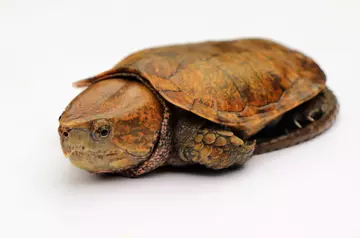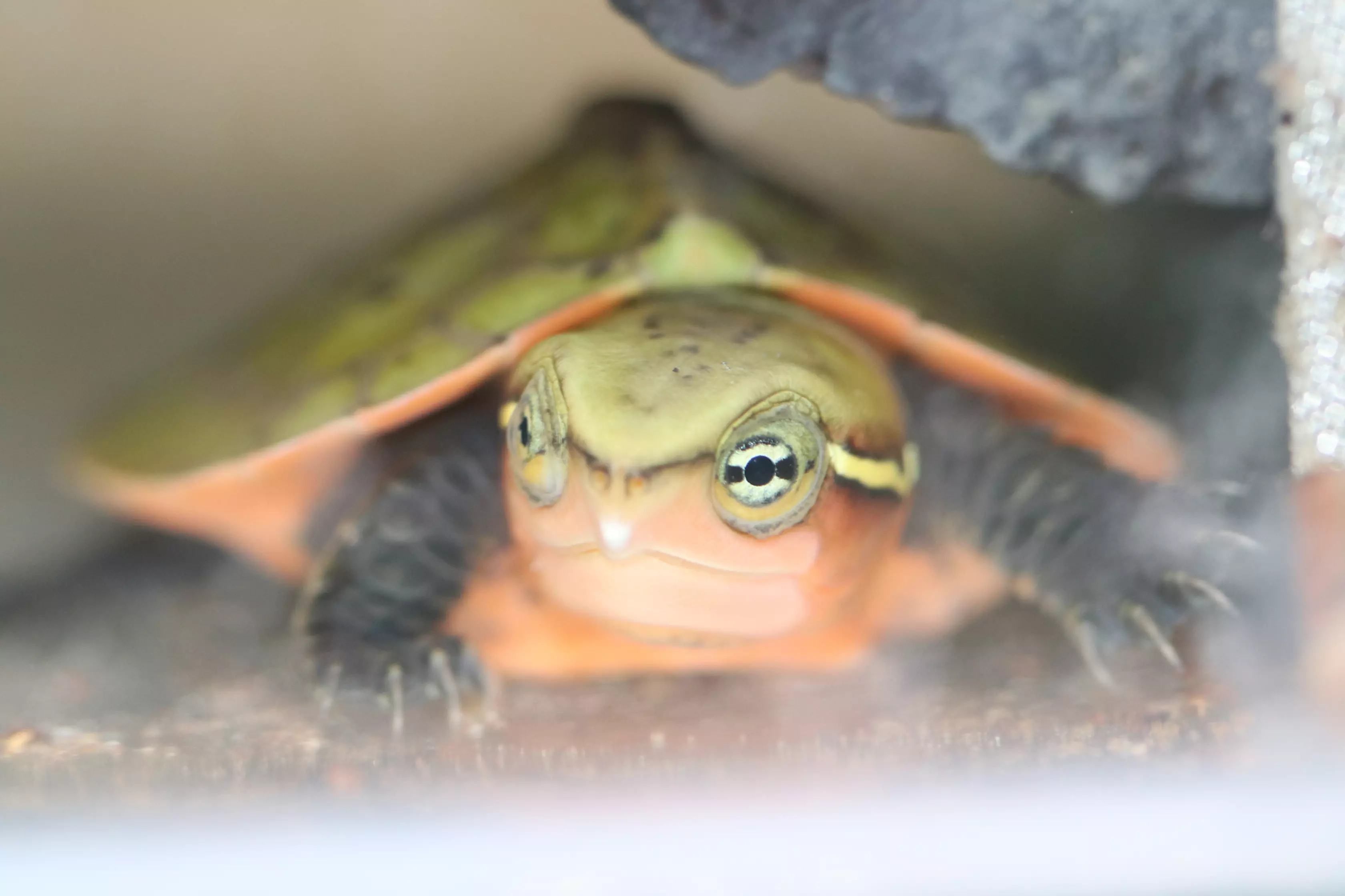
Big-headed turtle facts
- As its name suggests, this turtle’s head is so big it can’t be withdrawn inside its shell. Instead, the top and sides of its head are covered with a large bony ‘roof’ that acts like armour.
- These turtles have huge jaw muscles which help them break through crabs’ tough shells.

Where do big-headed turtles live?
Fast-flowing mountain streams in mainland Southeast Asia and southern China.
What do big-headed turtles eat?
Insects, crabs, molluscs and fruit.
What threats do big-headed turtles face in the wild?
- Sadly, the big-headed turtle and many other freshwater species are hunted for their meat and the international pet trade.
- These turtles are classified as Critically Endangered on the IUCN’s Red List of threatened species.
- They’re also ranked on ZSL’s EDGE of Existence reptile list, which puts unique and threatened species at the forefront of conservation attention - and are part of a collaborative conservation initiative that reintroduces rescued wild big-headed turtles back into the wild.
How can we protect big-headed turtles?
As part of conservation charity ZSL, we work with the Asian Turtle Programme in Vietnam. Together we have screened the genetics and assessed the health and released 300 big-headed turtles that were seized from the Illegal Wildlife Trade back into protected areas in northern Vietnam. We have also gained new insights into the trade of this species around two protected areas in Vietnam.
Big-headed turtle conservation
Critically Endangered big-headed turtles hatch at London Zoo
Their parents arrived at London’s conservation zoo after being rescued from smugglers trying to illegally import them into Canada labelled as toys.
Reptiles and amphibians are under threat
Reptiles and amphibians are some of the most threatened groups on the planet with pressures such as the deadly chytrid fungus, illegal trade, habitat loss and climate change.
The Secret Life of Reptiles and Amphibians
Hop around the world and experience some of the rarest and most unique reptiles and amphibians on Earth, from the snake-eating king cobra to mountain chickens we're saving from the brink of extinction.
